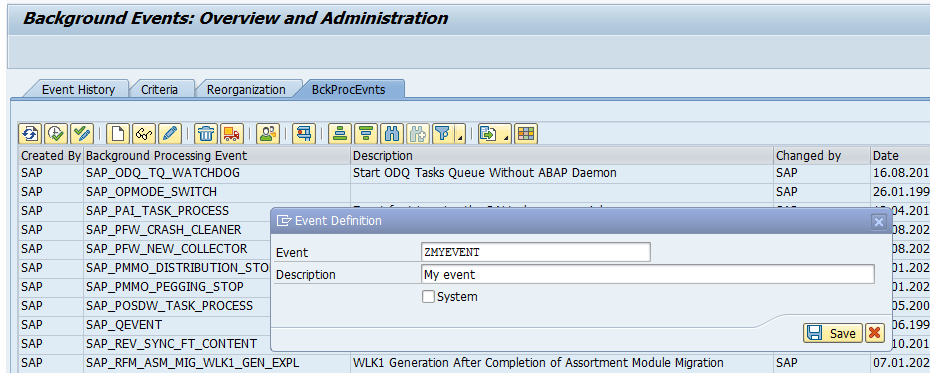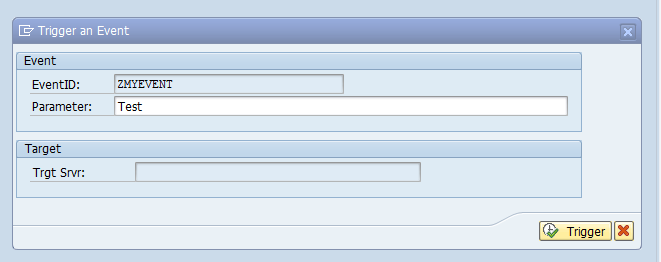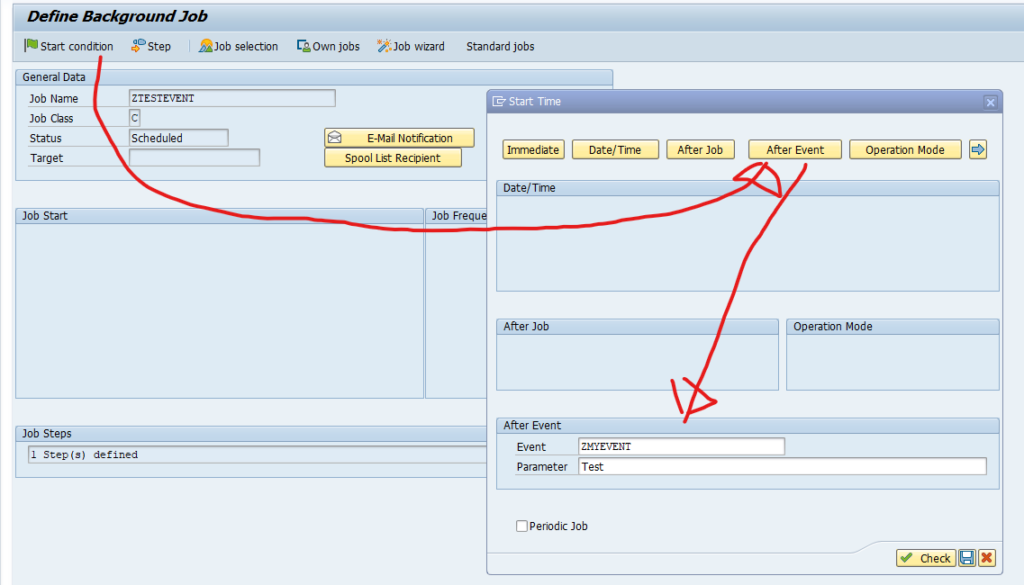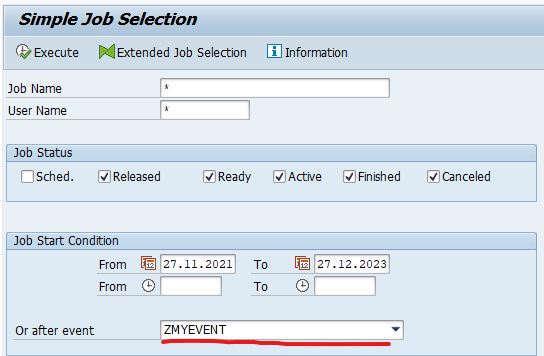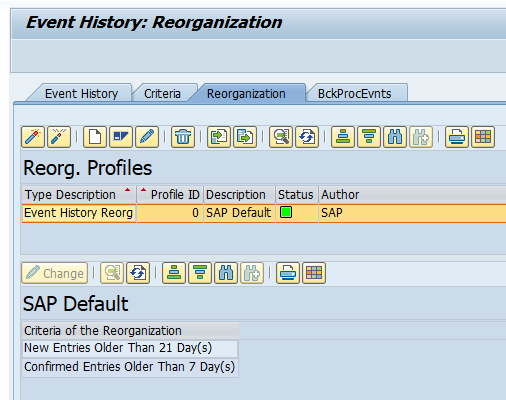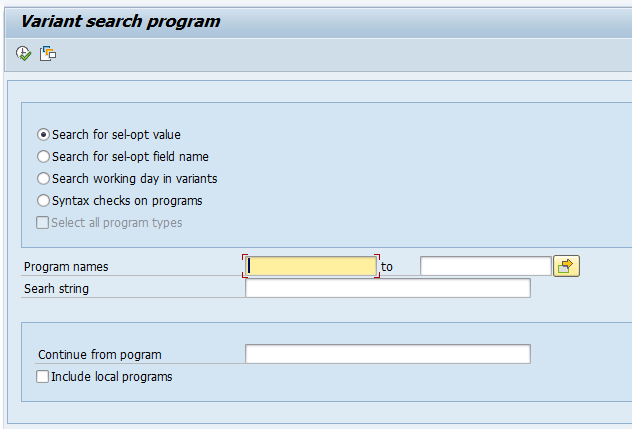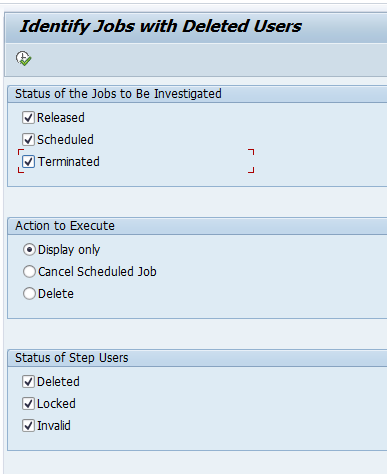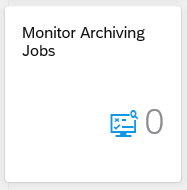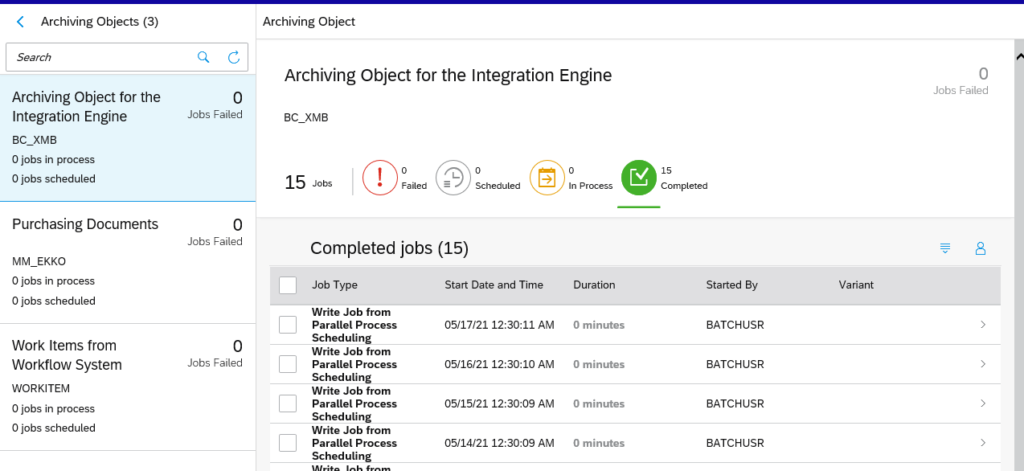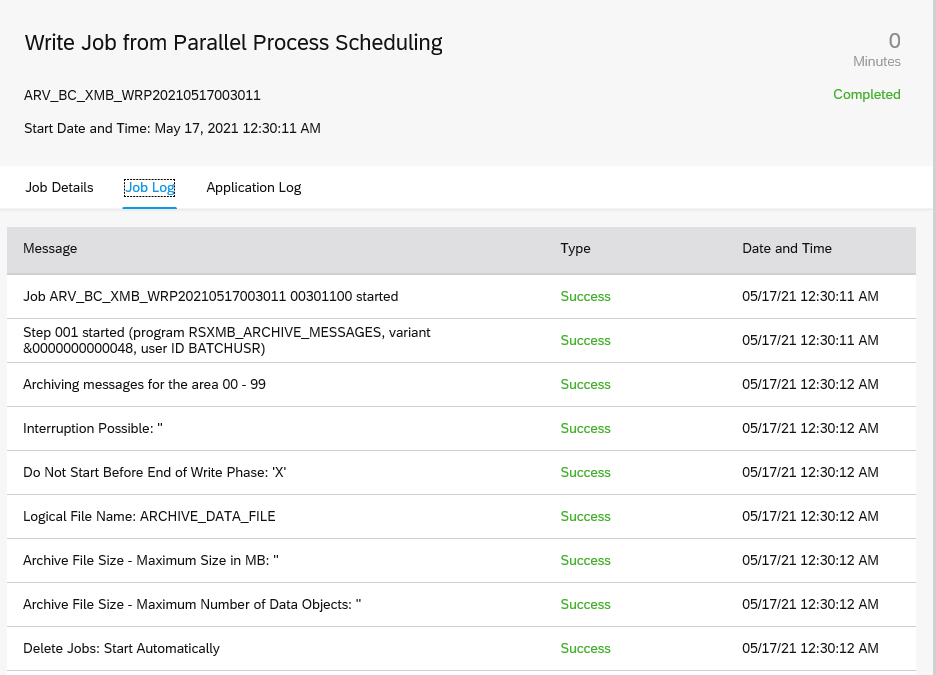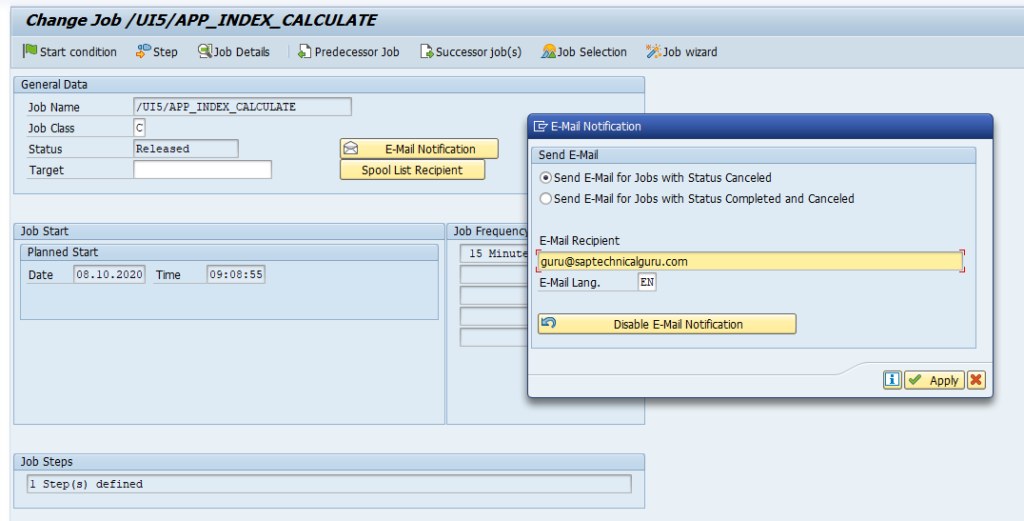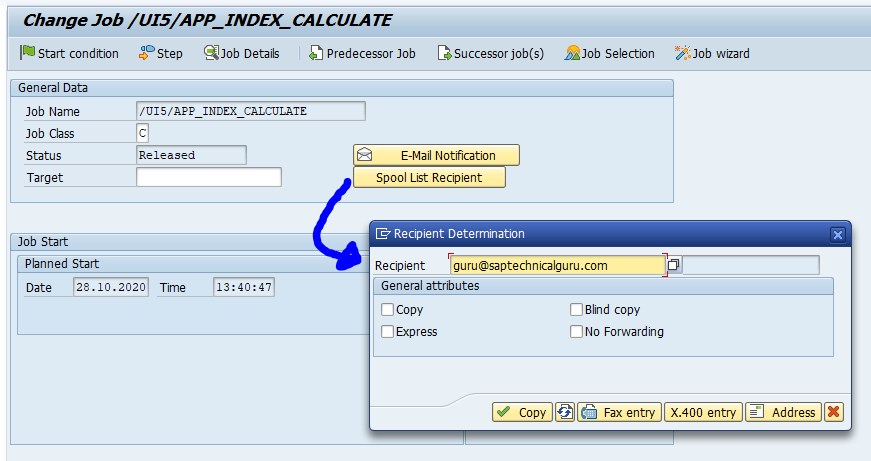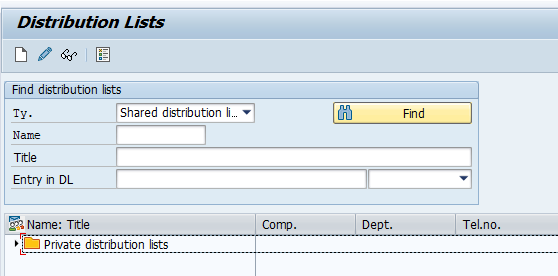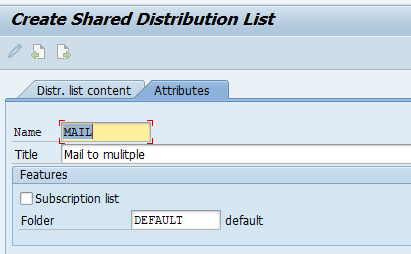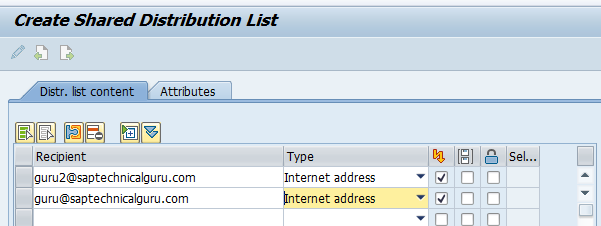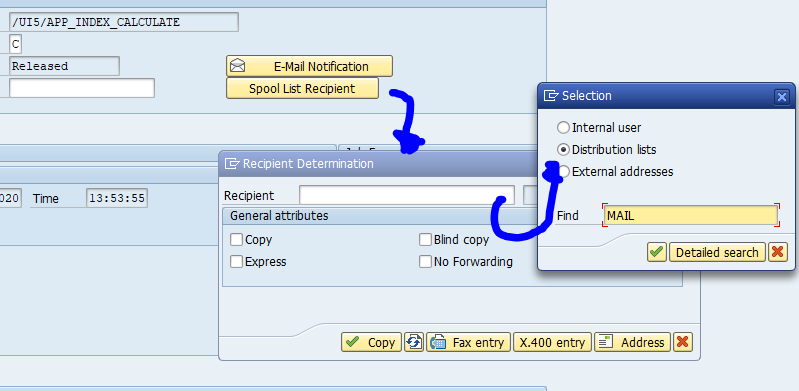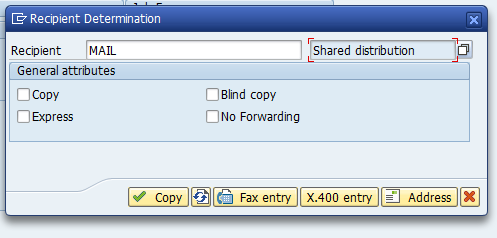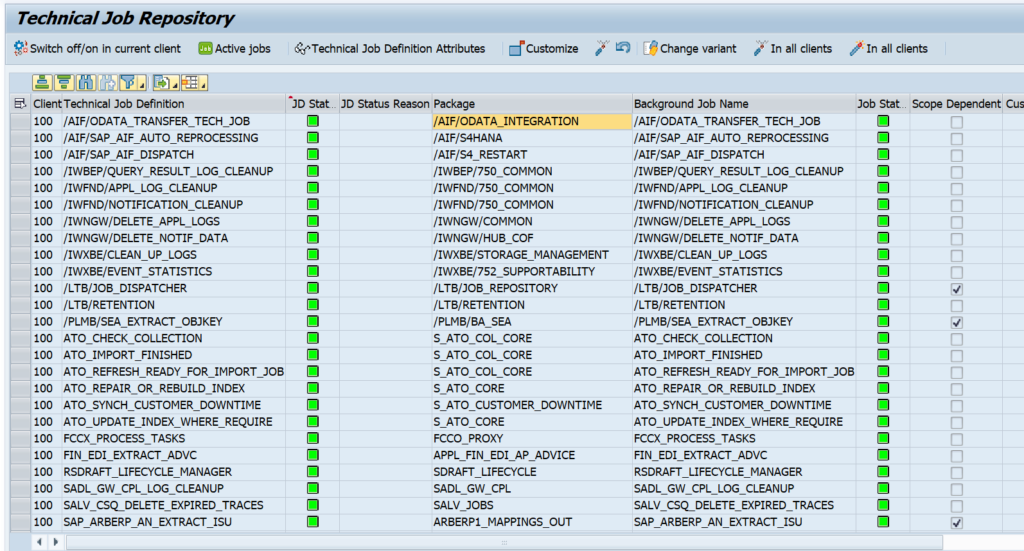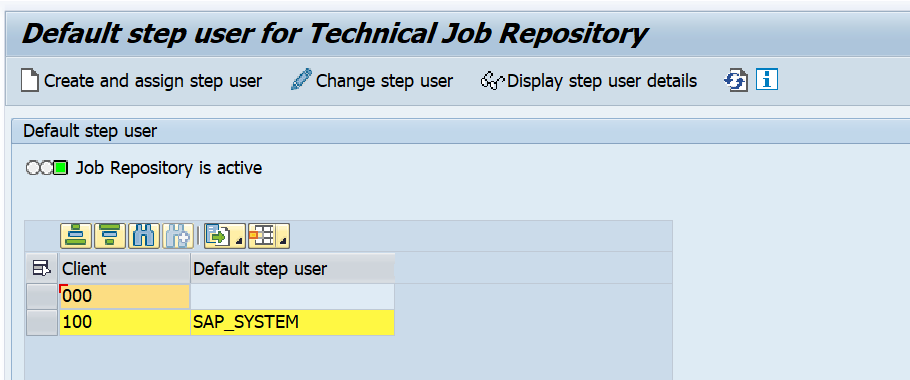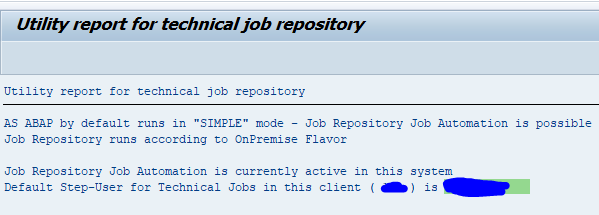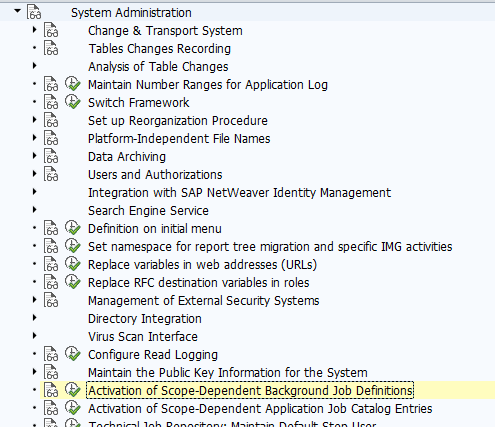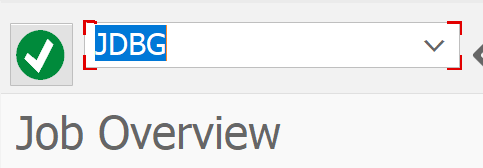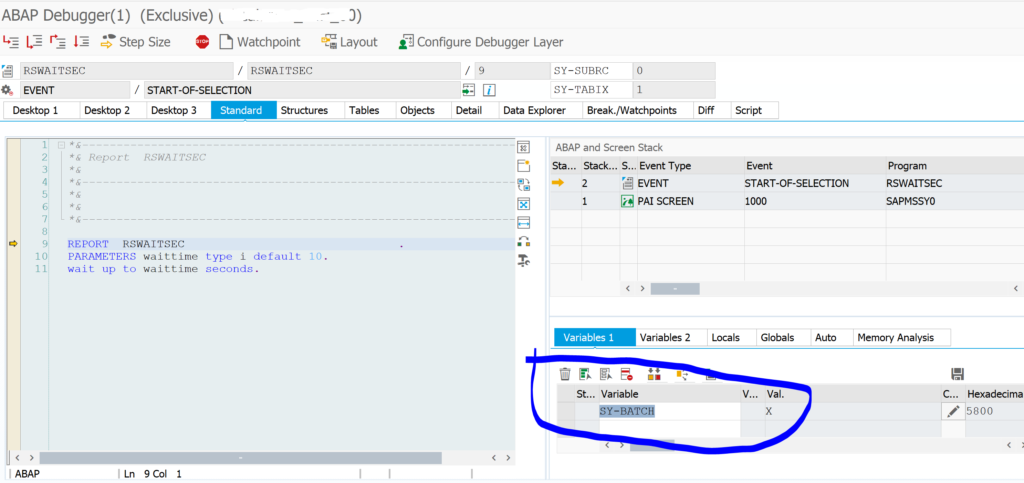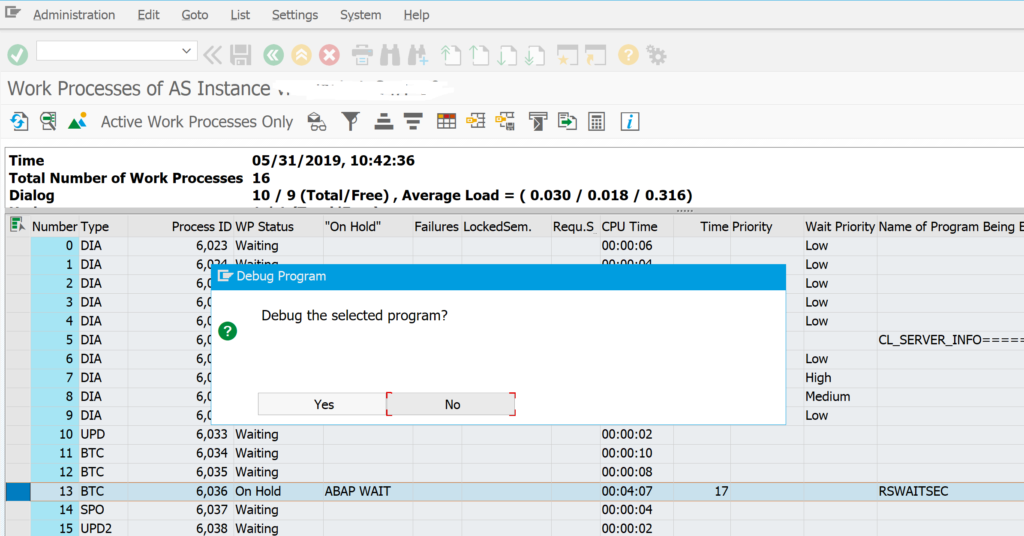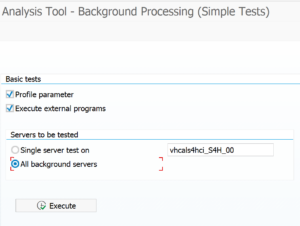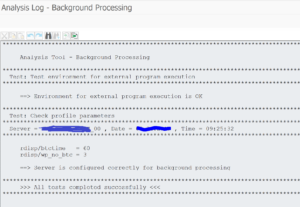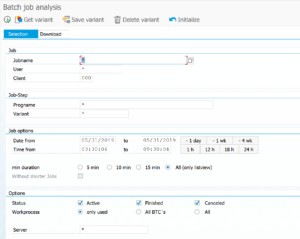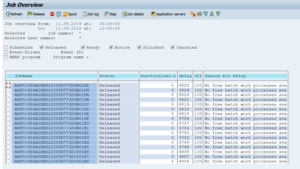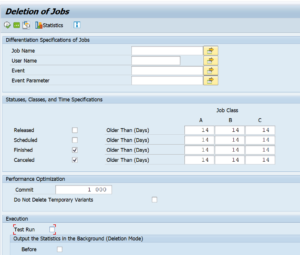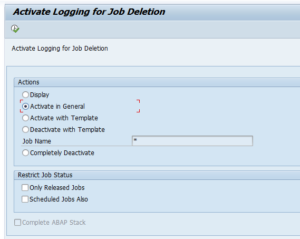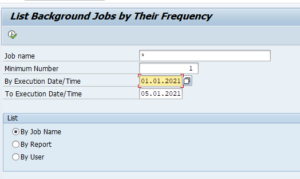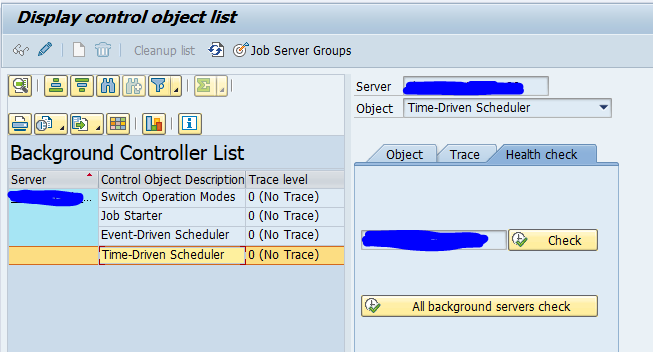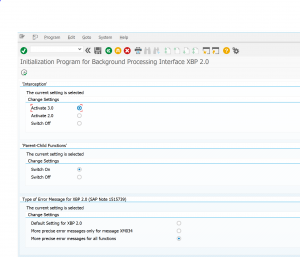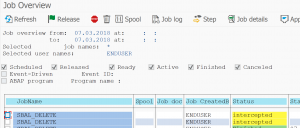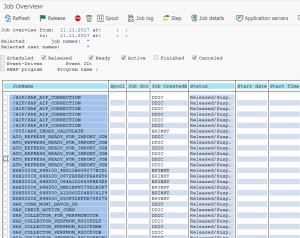In quite some cases the basis team is asked: in which batch job variant is this company code XXXX used? Or we need to add another sales organization to all the batch jobs, can you provide us a list with jobs using sales organization YYYY?
Some hints are given in this blog.
But no real solution.
Continue reading for a custom code solution!
Custom program to scan batch job variant content
If you load the program in the next section, create texts so that the start screen looks like this:
First test program on small batch of programs with know variants.
Example search all programs starting with ZA for the variant text US:
Result is list of program and variants with the key word:
Custom program coding
*&---------------------------------------------------------------------*
*& Report ZVARSEARCH
*&---------------------------------------------------------------------*
*&
*&---------------------------------------------------------------------*
REPORT ZVARSEARCH.
* _____________________________________________________________________
*| T A B L E S |
* ¯¯¯¯¯¯¯¯¯¯¯¯¯¯¯¯¯¯¯¯¯¯¯¯¯¯¯¯¯¯¯¯¯¯¯¯¯¯¯¯¯¯¯¯¯¯¯¯¯¯¯¯¯¯¯¯¯¯¯¯¯¯¯¯¯¯¯¯¯
TABLES: trdir, tadir.
* _____________________________________________________________________
*| T Y P E S |
* ¯¯¯¯¯¯¯¯¯¯¯¯¯¯¯¯¯¯¯¯¯¯¯¯¯¯¯¯¯¯¯¯¯¯¯¯¯¯¯¯¯¯¯¯¯¯¯¯¯¯¯¯¯¯¯¯¯¯¯¯¯¯¯¯¯¯¯¯¯
TYPES: BEGIN OF ty_source,
line(255) TYPE c,
END OF ty_source.
TYPES: BEGIN OF ty_objname,
obj_name TYPE sobj_name,
END OF ty_objname.
TYPES: BEGIN OF ty_variant,
variant TYPE variant,
END OF ty_variant.
* _____________________________________________________________________
*| I T A B S & W O R K A R E A S |
* ¯¯¯¯¯¯¯¯¯¯¯¯¯¯¯¯¯¯¯¯¯¯¯¯¯¯¯¯¯¯¯¯¯¯¯¯¯¯¯¯¯¯¯¯¯¯¯¯¯¯¯¯¯¯¯¯¯¯¯¯¯¯¯¯¯¯¯¯¯
DATA: gt_selop TYPE STANDARD TABLE OF vanz,
gt_params TYPE STANDARD TABLE OF vanz,
gt_params_nonv TYPE STANDARD TABLE OF vanz,
gt_selop_nonv TYPE STANDARD TABLE OF vanz,
gs_vanz TYPE vanz,
lv_text TYPE string,
gv_report TYPE vari_reprt,
mv_report TYPE vari_reprt,
gt_variant TYPE STANDARD TABLE OF ty_variant,
gs_variant TYPE ty_variant,
gv_program TYPE syrepid,
gv_subrc TYPE sysubrc,
gt_reports TYPE STANDARD TABLE OF trdir,
gs_reports TYPE trdir,
gt_valuetab TYPE STANDARD TABLE OF rsparams,
gt_objname TYPE STANDARD TABLE OF ty_objname.
FIELD-SYMBOLS:
<fs_vanz> TYPE vanz.
* _____________________________________________________________________
*| S E L E C T I O N - S C R E E N |
* ¯¯¯¯¯¯¯¯¯¯¯¯¯¯¯¯¯¯¯¯¯¯¯¯¯¯¯¯¯¯¯¯¯¯¯¯¯¯¯¯¯¯¯¯¯¯¯¯¯¯¯¯¯¯¯¯¯¯¯¯¯¯¯¯¯¯¯¯¯
SELECTION-SCREEN BEGIN OF BLOCK aa WITH FRAME.
SELECTION-SCREEN BEGIN OF BLOCK bb WITH FRAME TITLE text-t01.
PARAMETERS: ra_srch RADIOBUTTON GROUP a1
USER-COMMAND tab1 DEFAULT 'X',
ra_srch2 RADIOBUTTON GROUP a1,
ra_wday RADIOBUTTON GROUP a1,
ra_synt RADIOBUTTON GROUP a1,
ch_all AS CHECKBOX MODIF ID a2.
SELECTION-SCREEN END OF BLOCK bb.
SELECT-OPTIONS: so_prog FOR trdir-name.
PARAMETERS: p_string TYPE s_text MODIF ID a1.
SELECTION-SCREEN SKIP.
SELECTION-SCREEN BEGIN OF BLOCK cc WITH FRAME.
PARAMETERS: pa_prog TYPE program,
pa_local AS CHECKBOX.
SELECTION-SCREEN END OF BLOCK cc.
SELECTION-SCREEN END OF BLOCK aa.
* _____________________________________________________________________
*| A T S E L E C T I O N - S C R E E N O U T P U T |
* ¯¯¯¯¯¯¯¯¯¯¯¯¯¯¯¯¯¯¯¯¯¯¯¯¯¯¯¯¯¯¯¯¯¯¯¯¯¯¯¯¯¯¯¯¯¯¯¯¯¯¯¯¯¯¯¯¯¯¯¯¯¯¯¯¯¯¯¯¯
AT SELECTION-SCREEN OUTPUT.
LOOP AT SCREEN.
CASE screen-group1.
WHEN 'A1'.
IF ra_srch IS INITIAL
AND ra_srch2 IS INITIAL.
CLEAR p_string.
screen-input = '0'.
ELSE.
screen-input = '1'.
ENDIF.
WHEN 'A2'.
IF ra_synt = 'X'.
screen-input = '1'.
ELSE.
CLEAR ch_all.
screen-input = '0'.
ENDIF.
ENDCASE.
MODIFY SCREEN.
ENDLOOP.
* _____________________________________________________________________
*| S T A R T - O F - S E L E C T I O N |
* ¯¯¯¯¯¯¯¯¯¯¯¯¯¯¯¯¯¯¯¯¯¯¯¯¯¯¯¯¯¯¯¯¯¯¯¯¯¯¯¯¯¯¯¯¯¯¯¯¯¯¯¯¯¯¯¯¯¯¯¯¯¯¯¯¯¯¯¯¯
START-OF-SELECTION.
IF ( NOT ra_srch IS INITIAL OR NOT ra_srch2 IS INITIAL )
AND p_string IS INITIAL.
MESSAGE e001(00) WITH 'No string entered'.
ENDIF.
PERFORM select_programs.
PERFORM select_variants.
END-OF-SELECTION.
*&---------------------------------------------------------------------*
*& Form SELECT_PROGRAMS
*&---------------------------------------------------------------------*
* text
*----------------------------------------------------------------------*
FORM select_programs.
DATA: lv_tabix TYPE sytabix,
lv_lines TYPE i.
*-Only executable programs are taken into account
IF ch_all IS INITIAL.
SELECT * FROM trdir
INTO TABLE gt_reports
WHERE name IN so_prog
AND subc = '1'.
*-For syntax checking you can also include other program types
ELSE.
SELECT * FROM trdir
INTO TABLE gt_reports
WHERE name IN so_prog.
ENDIF.
SORT gt_reports BY name.
DESCRIBE TABLE gt_reports LINES lv_lines.
*-check if the user wants to start from a certain program
*-(so skip all preceding programs)
IF NOT pa_prog IS INITIAL.
READ TABLE gt_reports WITH KEY name = pa_prog
TRANSPORTING NO FIELDS.
IF sy-subrc = 0.
lv_tabix = sy-tabix + 1.
IF lv_tabix < lv_lines.
*- Delete all preceding reports including the start from report
DELETE gt_reports FROM 1 TO lv_tabix.
ENDIF.
ENDIF.
ENDIF.
IF gt_reports[] IS INITIAL.
MESSAGE s001(00) WITH 'No reports selected'.
WRITE:/ 'No reports selected'.
ENDIF.
ENDFORM. " SELECT_PROGRAMS
*&---------------------------------------------------------------------*
*& Form SELECT_VARIANTS
*&---------------------------------------------------------------------*
* text
*----------------------------------------------------------------------*
FORM select_variants .
DATA: lt_results TYPE STANDARD TABLE OF rsvobs,
lv_found TYPE flag.
REFRESH gt_objname.
CHECK NOT gt_reports[] IS INITIAL.
*-retrieve already all details for quicker reading
IF pa_local = 'X'. "Exclude local programs
SELECT obj_name INTO TABLE gt_objname
FROM tadir
FOR ALL ENTRIES IN gt_reports
WHERE pgmid = 'R3TR'
AND object = 'PROG'
AND obj_name = gt_reports-name.
ELSE. "Include local programs
SELECT obj_name INTO TABLE gt_objname
FROM tadir
FOR ALL ENTRIES IN gt_reports
WHERE pgmid = 'R3TR'
AND object = 'PROG'
AND obj_name = gt_reports-name
AND devclass <> '$TMP'.
ENDIF.
LOOP AT gt_reports INTO gs_reports.
READ TABLE gt_objname
WITH KEY obj_name = gs_reports-name
TRANSPORTING NO FIELDS.
CHECK sy-subrc = 0.
gv_program = gv_report = gs_reports-name.
*=====================================================================*
*- PERFORM A SYNTAX CHECK FOR PROGRAM
*=====================================================================*
*- Get the source code of the report for syntax checking
PERFORM program_syntax_check USING gv_program
CHANGING gv_subrc.
*- Skip programs with syntax errors for further variant checking
IF gv_subrc <> 0.
IF ra_synt = 'X'.
MESSAGE s000(3w) WITH 'SYNTAX ERROR==>' gv_report.
WRITE:/ gv_report,
50 'CONTAINS SYNTAX ERROR'.
ELSE.
CONTINUE.
ENDIF.
ENDIF.
*---------------------------------------------------------------------*
*- Only process variants for select-options search and working days
*---------------------------------------------------------------------*
CHECK ra_srch = 'X' OR ra_srch2 = 'X' OR ra_wday = 'X'.
*- Select variants for a program
*- (exclude the very old ones and also the standard SAP ones)
SELECT variant INTO TABLE gt_variant
FROM varid
WHERE report = gv_report
AND ( edat > 20100101 OR aedat > 20100101 )
AND ( ename <> 'SAP' AND aename <> 'SAP' ).
CHECK NOT gt_variant[] IS INITIAL.
REFRESH lt_results.
*- Process all variants
LOOP AT gt_variant INTO gs_variant.
CLEAR lv_found.
*- Give a message to indicate which program/variant is being checked
*- (comes in handy in case the program cancels during the check as
*- you can then restart this program starting from the object that
*- dumped)
MESSAGE s000(3w) WITH 'Checking' gv_report '-' gs_variant-variant.
CALL FUNCTION 'RS_VARIANT_CONTENTS'
EXPORTING
report = gv_report
variant = gs_variant-variant
no_import = ' '
execute_direct = ''
TABLES
l_params = gt_params
l_params_nonv = gt_params_nonv
l_selop = gt_selop
l_selop_nonv = gt_selop_nonv
valutab = gt_valuetab
EXCEPTIONS
variant_non_existent = 1
variant_obsolete = 2
OTHERS = 3.
CHECK sy-subrc = 0.
*=====================================================================*
*- SEARCH VARIANTS FOR A CERTAIN FIELD VALUE
IF ra_srch = 'X'.
*=====================================================================*
FIND FIRST OCCURRENCE OF p_string
IN TABLE gt_valuetab
IN CHARACTER MODE.
IF sy-subrc = 0.
CONCATENATE 'String' p_string 'found'
INTO lv_text SEPARATED BY space.
MESSAGE s000(3w) WITH 'FOUND:' gv_report
gs_variant-variant lv_text.
WRITE:/ 'FOUND:',
7 gv_report,
50 gs_variant-variant,
80 lv_text.
ENDIF.
*=====================================================================*
*- SEARCH VARIANTS FOR A CERTAIN FIELD NAME OR FIELD DESCRIPTION
ELSEIF ra_srch2 = 'X'.
*=====================================================================*
*- Check select-options field names and descriptions for a
*- certain string
LOOP AT gt_selop ASSIGNING <fs_vanz>.
FIND FIRST OCCURRENCE OF p_string
IN <fs_vanz>-name IN CHARACTER MODE.
IF sy-subrc = 0.
lv_found ='X'.
EXIT.
ENDIF.
ENDLOOP.
IF lv_found IS INITIAL.
LOOP AT gt_selop_nonv ASSIGNING <fs_vanz>.
FIND FIRST OCCURRENCE OF p_string
IN <fs_vanz>-name IN CHARACTER MODE.
IF sy-subrc = 0.
lv_found ='X'.
EXIT.
ENDIF.
ENDLOOP.
ENDIF.
IF lv_found IS INITIAL.
LOOP AT gt_params ASSIGNING <fs_vanz>.
FIND FIRST OCCURRENCE OF p_string
IN <fs_vanz>-name IN CHARACTER MODE.
IF sy-subrc = 0.
lv_found ='X'.
EXIT.
ENDIF.
ENDLOOP.
ENDIF.
IF lv_found IS INITIAL.
LOOP AT gt_params_nonv ASSIGNING <fs_vanz>.
FIND FIRST OCCURRENCE OF p_string
IN <fs_vanz>-name IN CHARACTER MODE.
IF sy-subrc = 0.
lv_found ='X'.
EXIT.
ENDIF.
ENDLOOP.
ENDIF.
IF lv_found = 'X'.
CONCATENATE 'String' p_string 'found'
INTO lv_text SEPARATED BY space.
MESSAGE s000(3w) WITH 'FOUND:' gv_report
gs_variant-variant lv_text.
WRITE:/ 'FOUND:',
7 gv_report,
50 gs_variant-variant,
80 lv_text.
ENDIF.
*=====================================================================*
*- SEARCH VARIANTS FOR VARIABLES THAT REQUIRE CALENDAR ENTRY
ELSEIF ra_wday = 'X'.
*=====================================================================*
LOOP AT gt_selop INTO gs_vanz
WHERE vname <> ''.
IF gs_vanz-vname CS 'XWD' OR gs_vanz-vname CS 'WDAY'.
lv_found ='X'.
EXIT.
ENDIF.
ENDLOOP.
IF lv_found IS INITIAL.
LOOP AT gt_selop_nonv INTO gs_vanz
WHERE vname <> ''.
IF gs_vanz-vname CS 'XWD' OR gs_vanz-vname CS 'WDAY'.
lv_found ='X'.
EXIT.
ENDIF.
ENDLOOP.
ENDIF.
IF lv_found IS INITIAL.
LOOP AT gt_params INTO gs_vanz
WHERE vname <> ''.
IF gs_vanz-vname CS 'XWD' OR gs_vanz-vname CS 'WDAY'.
lv_found ='X'.
EXIT.
ENDIF.
ENDLOOP.
ENDIF.
IF lv_found IS INITIAL.
LOOP AT gt_params_nonv INTO gs_vanz
WHERE vname <> ''.
IF gs_vanz-vname CS 'XWD' OR gs_vanz-vname CS 'WDAY'.
lv_found ='X'.
EXIT.
ENDIF.
ENDLOOP.
ENDIF.
IF lv_found = 'X'.
MESSAGE s000(3w) WITH 'FOUND:' gv_report gs_variant-variant
'Calendar logic present'.
WRITE:/ 'FOUND:',
8 gv_report,
50 gs_variant-variant,
80 'Calendar logic present'.
ENDIF.
ENDIF.
ENDLOOP.
ENDLOOP.
ENDFORM. " SELECT_VARIANTS
*&---------------------------------------------------------------------*
*& Form PROGRAM_SYNTAX_CHECK
*&---------------------------------------------------------------------*
* text
*----------------------------------------------------------------------*
* <--P_LV_SUBRC text
*----------------------------------------------------------------------*
FORM program_syntax_check USING p_program
CHANGING p_subrc.
DATA: lt_source TYPE STANDARD TABLE OF ty_source.
CLEAR p_subrc.
REFRESH lt_source.
READ REPORT gv_program INTO lt_source.
CALL FUNCTION 'RS_SYNTAX_CHECK'
EXPORTING
i_program = p_program
IMPORTING
o_error_subrc = p_subrc
TABLES
i_source = lt_source.
ENDFORM. " PROGRAM_SYNTAX_CHECK
